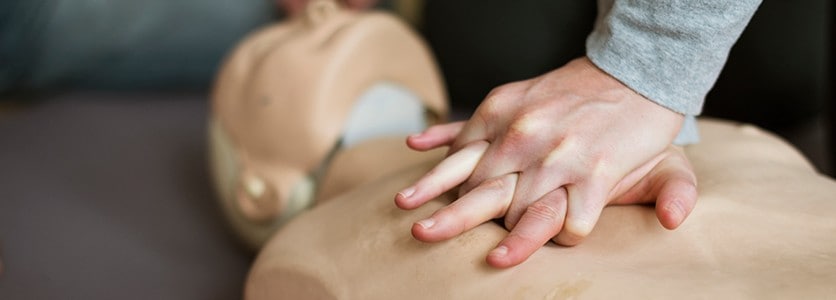03 May 2023
•4 minute read
Understanding Cardiac Arrest: What it is, What causes it, and How do you act on it?
What is Cardiac Arrest?
Cardiac arrest is a life threatening medical emergency when our heart suddenly stops beating. It requires immediate intervention like Cardiopulmonary Resuscitation (CPR). One of the main functions of the heart is to pump the blood that contains oxygen to be delivered to all the cells, tissues and organs. When cardiac arrest occurs, there is no blood flow to our vital organs like our brain. Brain cells will start to die off within 4min if CPR is not performed after cardiac arrest. The longer the brain is without oxygen, the risk of permanent damage to the brain is higher.
What are the prevalence of Out of hospital Cardiac Arrest in Malaysia?
According to a research published by PATOS in 2015, these are some of the findings:
- The witnessed cardiac arrest contributes about 47% compared to non-witness cardiac arrest (45%).
- The bystander CPR is only 22.6%.
- The average age of the cardiac arrest patient in Malaysia is 57 years old.
- The prevalence is more in males about 71%.
- 22.6% of them are patients with risk factors of heart diseases.
- The survival rate of patients discharged from hospital is only 0.5%.
What causes Cardiac Arrest?
There are several known factors that can contribute to sudden cardiac arrest like coronary heart disease, abnormal heart rhythm(arrhythmias), cardiomyopathy, hereditary condition like Brugada syndrome, drug abuse and also risk factors like hypertension, hyperlipidaemia, smoking and others.
How do you know that the person is having a Cardiac Arrest?
Cardiac arrest can occur suddenly with or without warning. Below are some of the symptoms or signs that might indicate that the person is suffering from Cardiac Arrest:
- Sudden loss of consciousness
- Absence of breathing
- Absence of pulse or heartbeat
One of the main risk factors to cardiac arrest is due to Acute Coronary Syndrome. There are also some warning signs that might indicate the person is having Acute Coronary Syndrome like:
- Chest pain or discomfort
- Shortness of breath
- Nausea or vomiting
- Profuse sweating
There is also some atypical presentation of Acute Coronary Syndrome especially in the older population, female and diabetic patients. These patients might not be having chest pain but may present:
- Upper abdominal pain
- Shortness of breath without chest pain
- Profuse sweating without chest pain
- Nausea and vomiting without chest pain
- Non-specific symptoms like lethargy or back pain
How do you approach a Cardiac Arrest patient?
Currently, the American Heart Association (AHA) recommends “Hand Only CPR” for a lay person provider. It is a 2-step approach. This 2-step approach is the simplified version of CPR that can be performed by anyone without the need for mouth to mouth breathing.

Step 1: Call for Emergency Medical Services
- The first step is to call for help. If you witness a person collapsing or find someone unresponsive, call Malaysia Emergency Response System or 999 immediately.
Step 2: Start Hands-Only CPR
- Once you have called for help, start hands-only CPR. Place the heel of one hand in the centre of the chest. Next, place the other hand on top of the first hand and interlock your fingers. Then, start pushing hard and fast on the person’s chest. The recommended rate of compression is at least 100 to 120 compression per min. The compression needs to be continued until the person starts breathing or the EMS arrives and takes over.
How to prevent Cardiac Arrest?
Unfortunately, the majority of sudden cardiac arrest cases cannot be identified in advance. The best way to prevent is:
- Recognise the signs and symptoms of impending cardiac arrest and Coronary Heart Disease.
- Annual health check-up or cardiac assessment if you have the risk factors. There are several modalities of investigation that can be done for screening of coronary heart disease such as stress test and CT scan of the heart.
- Adopt a healthy life style that includes a balanced diet, adequate sleep and exercise.
- Stop smoking and vaping.
- Proper follow up with your doctor.

What can we do more in the society to improve the survival rate of out-of-hospital cardiac arrest?
- Teaching Hands-Only CPR in primary school. In Japan, hands-only CPR is a compulsory topic taught in primary school. Malaysia can also adapt this topic into their syllabus.
- Have Automated External Defibrillation (AED) available in public places for example in all sports centres, condominiums and offices.
- Make it compulsory to have CPR and AED taught to all company employees as part of their Human Resource Training.
- Tax relief for those who have attended a Basic Life Support Course.
This article first appeared in Sinar Daily, 16 June 2023.
Share:
Was this article helpful?
03 May 2023
•4 minute read
Understanding Cardiac Arrest: What it is, What causes it, and How do you act on it?
Learn more about Emergency Medicine in Columbia Asia
Learn MoreShare:
Was this article helpful?
Health Packages
Elevate your health with tailored health packages at Columbia Asia Hospital. Take charge of your health journey today.
AIA Policyholders Self-pay Benefits
HLA Policyholders Promo: Influenza Vaccination
RM65
Find Out MorePink October 2025
From
RM80
Pink October 2024
From
RM80

